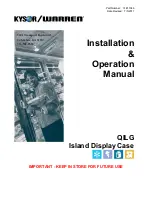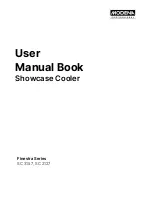
82002-PG-F
ST3400 TAWS/RMI PILOT’S GUIDE
PAGE 24
DISPLAY SELECTION BUTTONS
Button
View
Description
TERR
RELative Altitude
PREDictive Altitude
Color coded above/below aircraft current
altitude; flight plan displayed. This
selection pops-up from any other
selection in the event of a terrain alert.
Color coded above/below aircraft flight
path angle (predicted altitude)
TOPO
TOPOgraphic
Topographic view of the terrain without
regard to aircraft altitude; flight plan
displayed.
TFC
Traffic
Traffic is displayed. No terrain or flight
plan is displayed.
RMI
RMI
Compass rose is displayed, no terrain or
flight plan is displayed
VUE FULL
ARC
360-degree view
70-degree view (not available for TFC)
Size of terrain cells is maintained when
toggling between FULL view and ARC
82002-PG-F
ST3400 TAWS/RMI PILOT’S GUIDE
PAGE 25
Press to increase the range in REL,
PRED, TOPO or TFC view
Press to decrease the range in REL,
PRED, TOPO or TFCview
M
MENU
Press to display the Pilot’s Menu
Current Display Mode
This indication in the upper left corner identifies the current display mode:
PRED, REL, TOPO, TFC, or RMI. Flashes for 5 seconds whenever it
changes to REL or PRED mode.
Flight Plan
Each flight plan segment of the GPS/FMS flight plan consists of a line
between consecutive waypoints. The active flight plan segment is colored
magenta and the rest of the flight plan is colored white. When the RMI
bearing pointer is selected to GPS, the bearing pointer will be point to the
direction of the next waypoint on the magenta segment.
Note: When Bendix/King GPS receivers are in OBS mode, no course line
will be shown on the ST3400 display.
Lubber Line and Directional Source Readout
The lubber line is the direction reference for the compass card in RMI
mode. It is shown as an inverted solid triangle stationary at the top of the
display; the compass rose/arc rotates when the aircraft’s track changes
The directional source (HDG/TRK) for all modes is shown within a box at
the top of the display and flashes for 5 seconds whenever it should change
between heading and track. Terrain views are based on TRK (where you
are going) and RMI is based on HDG (where you are pointed).
Note: Traffic is always referenced to the nose of the aircraft, even when
terrain data is referenced to TRK.








































